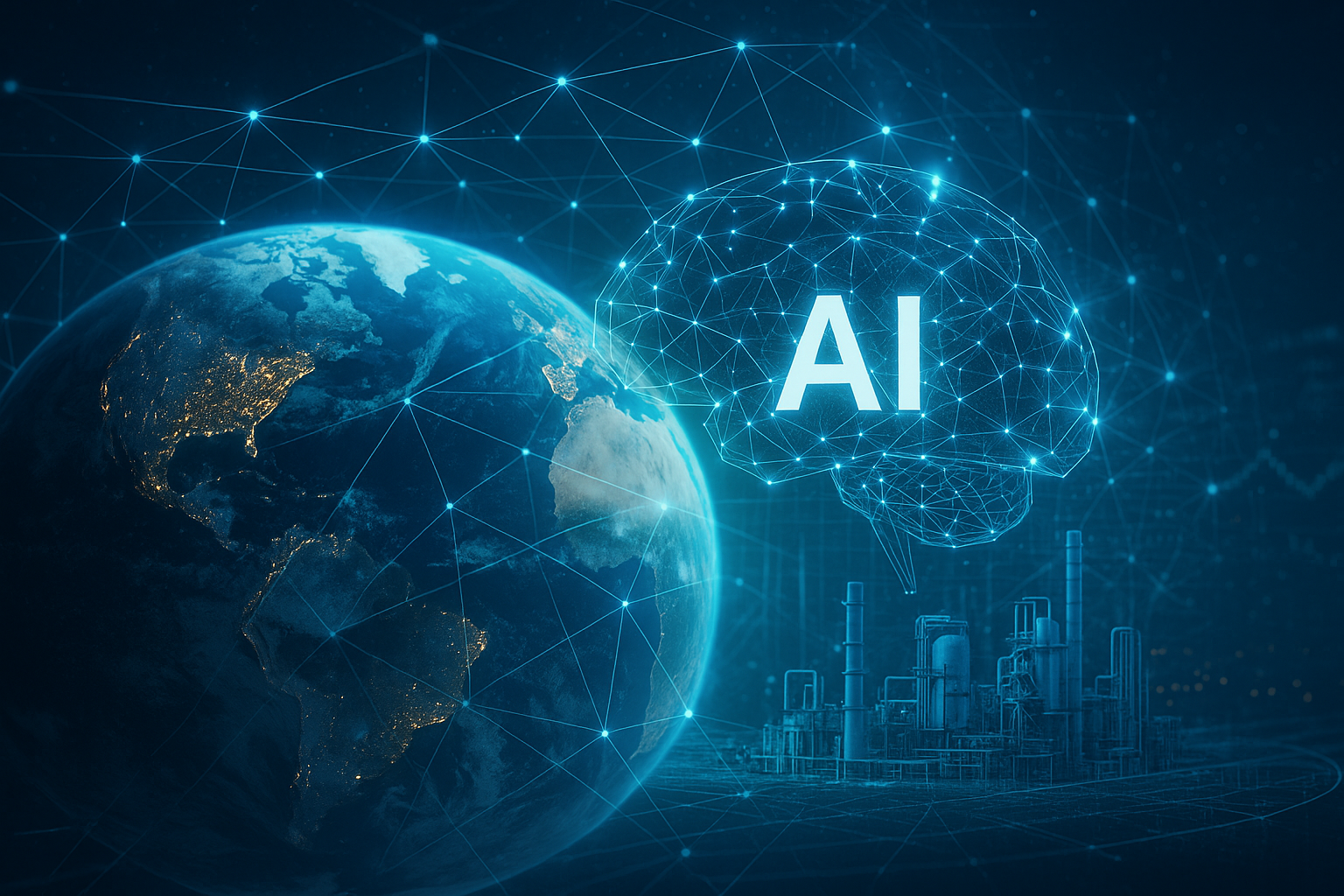AI Climate Tech: Solving Prob. | 매거진에 참여하세요
AI Climate Tech: Solving Prob.
#climate #tech #withAI #effigency #analysis #problem #solving #speed
How Artificial Intelligence Is Tackling the Climate Crisis
When DeepMind’s AlphaFold cracked the decades-old problem of predicting protein structures in 2021, the scientific community called it “a Nobel Prize–level contribution.”
It makes you wonder: if AI could solve something that had stumped biologists for half a century, could it also help us confront something as vast and urgent as the climate crisis?
The climate challenge is undeniably more complex than protein folding.
But both share a key similarity: mountains of messy, interconnected data that need to be analyzed, simulated, and optimized.
That’s where AI shines. Around the world, researchers and companies are beginning to deploy AI not just as a productivity booster,
but as a climate problem-solver.
Three Areas Where AI Excels
1. Energy Efficiency and Carbon Capture
Cutting carbon is ultimately a game of efficiency, how to do more with less.
Google DeepMind optimized its data center cooling systems with AI, cutting energy use by over 30% and slashing cooling-related electricity consumption by 40%.
DeepMind researchers are also exploring how reinforcement learning can redesign carbon capture filters at the molecular level, enabling more CO₂ to be trapped with less energy.
In short: AI finds the “sweet spots” that humans and traditional engineering models struggle to identify.
2. Weather and Climate Forecasting
Traditional weather models rely on supercomputers crunching billions of calculations.
They’re accurate but slow, and not always nimble enough for local decisions.
NVIDIA’s FourCastNet can simulate global weather patterns 45,000 times faster than conventional models.
During the 2024 European heatwave, it outperformed standard forecasts by 12% in short-term accuracy.
Microsoft is applying AI to predict rainfall at the micro-regional level, helping farmers and logistics companies make faster, better-informed decisions.
For the first time, AI is giving us near-real-time visibility into the climate ahead, at both global and local scales.
3. Finance and ESG Investing
Climate change is not just a scientific puzzle, it’s a financial risk. Investors need to know which companies are truly sustainable and
which are simply greenwashing.
BlackRock now uses AI to estimate corporate emissions by analyzing reports, satellite images, and media coverage, scaling down investments in carbon-intensive businesses.
MSCI has rolled out AI-powered detection for misleading ESG disclosures, automatically flagging “greenwashing” in corporate filings.
Here, AI acts as the eyes of capital, redirecting money flows toward climate-positive investments.

Real-World Case Studies
Google Data Centers:
AI cooling has saved tens of millions of dollars annually since 2016, proving that climate and cost efficiency can coexist.
Climeworks (Switzerland):
Its Orca facility pulls 4,000 tons of CO₂ from the atmosphere each year. With AI-driven filter optimization, efficiency improved by 15%, and the
company plans to scale to hundreds of thousands of tons by 2027.
FourCastNet Adoption:
Agricultural and energy companies are already piloting services based on NVIDIA’s model, embedding AI into their operational playbooks.
The Climate Tech Market
Climate Tech isn’t just an environmental cause, it’s a booming industry.
In 2024, global Climate Tech investment reached $87 billion.
AI-driven climate startups are projected to grow at a 25% CAGR through 2030.
Investors increasingly view energy efficiency, ESG finance, and risk management as the three pillars of AI Climate Tech.
Challenges on the Road Ahead
AI isn’t a silver bullet. Key hurdles remain:
Uneven data quality between satellites, sensors, and regions
Geographic bias models trained on U.S. and European data may underperform in Asia or Africa
Lack of standardized frameworks for climate data and carbon accounting
To be truly effective, AI Climate Tech will need not just algorithms, but global cooperation, better regulation, and shared data standards.
A Partner, Not a Savior
Just as AlphaFold redefined what was possible in life sciences, AI is starting to show us what’s possible in climate action.
It won’t “solve” the climate crisis on its own. But by:
- making energy use radically more efficient,
- predicting future climate patterns with higher speed and accuracy, and
- channeling capital toward sustainable businesses,
AI can become an invisible partner in our fight against climate change.
The next decade will be shaped not just by political will and industrial innovation,
but by how effectively we apply AI optimization to the planet’s toughest problem.






